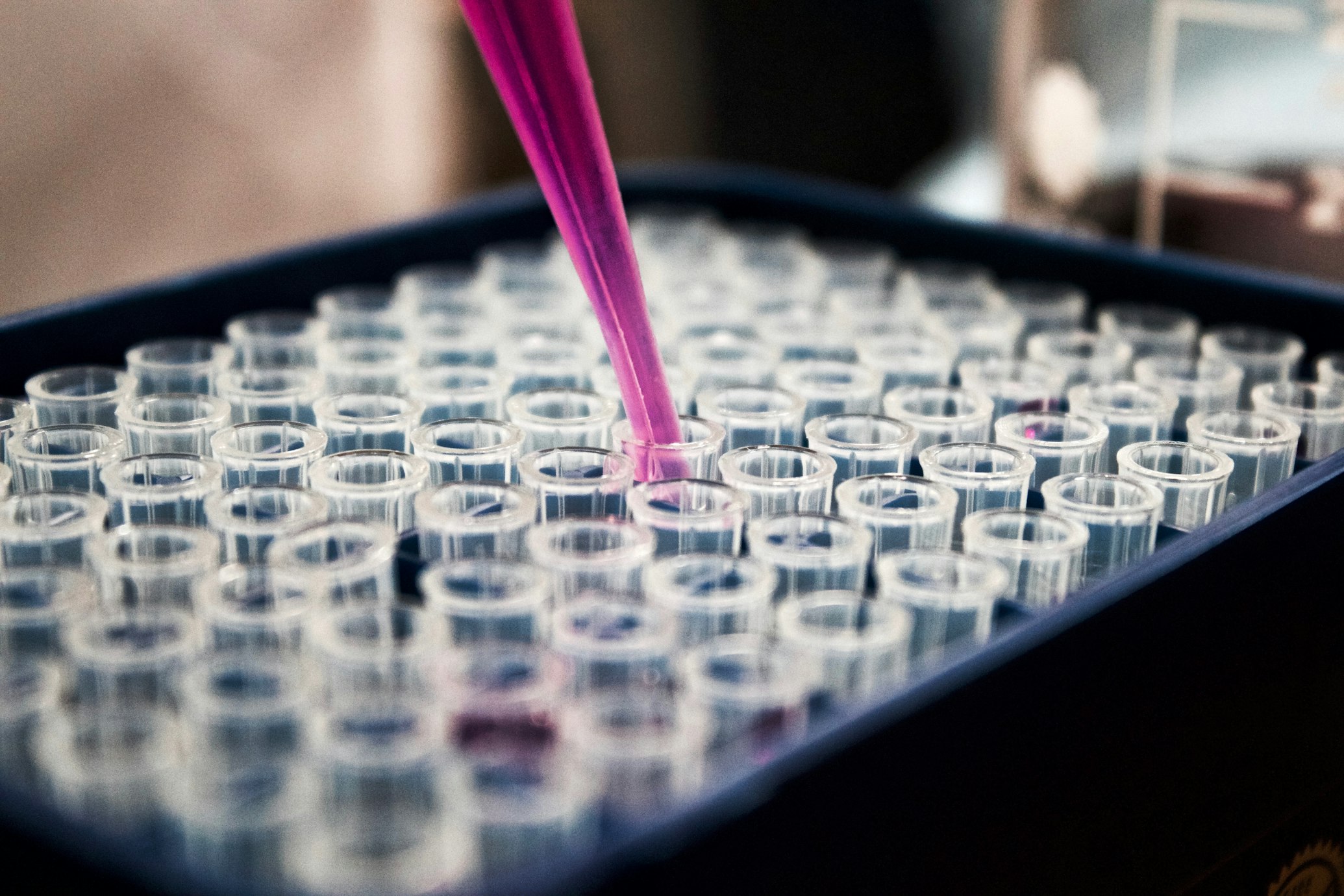The Invisible Handshake
How Gold Nanoclusters Reveal Secrets of Molecular Charge Transfer
The Quantum Bridge
Gold has mesmerized humanity for millennia, but its truest magic unfolds at the nanoscale.
When gold shrinks to clusters of 25–144 atoms, it transforms into a molecular-like substance with extraordinary optical and electronic properties. These gold nanoclusters (AuNCs), protected by thiolate ligands (-SR), act as quantum bridges where electrons dance between metal and molecule—a process pivotal for next-generation technologies 1 2 .
Spectroscopy allows us to "see" this charge transfer in action. Recent breakthroughs reveal that thiolated ligands don't just passively shield gold cores—they actively exchange energy and electrons. By studying AuNCs, scientists crack the code of interfacial charge transfer, enabling revolutionary designs in energy harvesting, sensing, and nanomedicine .

Key Concepts: Why Size & Surface Matter
Atomically Precise Architects
Unlike larger nanoparticles, AuNCs possess exact atomic compositions. Landmark structures include:
- Auâ‚‚â‚…(SR)â‚₈: 13-atom icosahedral core + 6 dimeric "staples"
- Au₃₈(SR)₂₄: Bi-icosahedral core with helical staples
- Auâ‚â‚„â‚„(SR)₆₀: Icosahedral shell with distinct surface sites 1 2
This precision turns clusters into test beds for tracking how charge moves between gold atoms and attached thiols.
The Charge Transfer Tango
Two primary mechanisms dominate:
- Ligand-to-Metal Charge Transfer (LMCT): Electrons jump from sulfur atoms (in thiols) to gold orbitals.
- Core-to-Ligand Charge Transfer (CLCT): Excited electrons migrate from the gold core to ligand orbitals.
These processes alter cluster fluorescence, conductivity, and catalytic behavior—visible via spectroscopic fingerprints 2 .
Spectroscopic Spotlight
Key techniques reveal charge transfer:
- UV-Vis Spectroscopy: Traces discrete energy transitions (e.g., HOMO-LUMO gaps: 1.3 eV in Au₂₅ vs. 1.0 eV in Au₃₈) 1 .
- Photoluminescence: Reveals charge-transfer-induced emission (e.g., 448 nm peak in LC-conjugated AuNCs) .
- X-ray Photoelectron Spectroscopy (XPS): Detects gold oxidation states shifted by ligand bonding .
Decoding Charge Transfer: The Liquid Crystal Experiment
Step-by-Step Methodology
Ligand Design
Synthesized thiol-modified LC TAT-12 (4′-(2-mercaptoethyl)-(1,1′-biphenyl)-4-carbonitrile) via Suzuki coupling.
Cluster Synthesis
Mixed TAT-12 with HAuClâ‚„ in a one-pot reaction, forming AuNCs@TAT-12 via Au-S bonds.
Spectroscopic Interrogation
- UV-Vis/XPS: Confirmed Au oxidation states.
- Fluorescence: Measured emission peaks from ligand vs. charge transfer states.
- TEM: Verified cluster size (2.3 nm avg.) .
Experimental Results
| Step | Technique | Observation | Implication |
|---|---|---|---|
| Ligand Synthesis | NMR/DSC | Stable mesophase transitions in TAT-12 | Confirmed LC behavior |
| AuNC Formation | TEM | Spherical clusters (2.3 nm) | Quantum confinement present |
| Charge Transfer | Fluorescence | Peak at 448 nm (vs. 352 nm for free TAT-12) | LMCT between TAT-12 and Au core |
Results & Significance
- A distinct fluorescence peak at 448 nm emerged, absent in free TAT-12. This signal was assigned to LMCT from the biphenyl group to the gold core.
- Quantum yield (10.1%) surpassed many biological dyes, proving efficiency.
- XPS showed oxidized gold states, confirming covalent Au-S bonds enable charge exchange .
Why It Matters
This hybrid design proves charge transfer can be tuned by ligand chemistry—enabling custom optoelectronic materials for displays or biosensors.
Data Deep Dive: Spectral Evidence of Charge Transfer
| Cluster Type | Absorption Peak (nm) | Emission Peak (nm) | Assigned Transition |
|---|---|---|---|
| Auâ‚â‚(GSH) | ~400 | 650 | Ligand-centered |
| Auâ‚‚â‚…(SR)â‚₈ | 450, 670 | 700–800 | Core-LMCT hybrid |
| AuNCs@TAT-12 | 280, 325 | 448 | LMCT (TAT-12 → Au) |
| Application | Cluster System | Performance Gain | Role of Charge Transfer |
|---|---|---|---|
| Solar Cells | Au₂₅-GSH on TiO₂ | 70% IPCE (400–425 nm) | Electron injection into TiO₂ |
| Hydrogen Production | Auâ‚™-GSH/Pt/TiOâ‚‚ | Visible-light Hâ‚‚ generation | LMCT-enabled water reduction |
| Bioimaging | LC-conjugated AuNCs | High-contrast tumor targeting | Tunable NIR emission via CLCT |


The Scientist's Toolkit: Key Reagents & Their Roles
| Reagent | Function | Example in Use |
|---|---|---|
| Tetrachloroauric Acid | Gold precursor for cluster synthesis | Forms Au core in AuNCs@TAT-12 |
| Glutathione (GSH) | Thiol ligand enabling photosensitization | Boosts solar cell voltage by 100 mV 2 |
| Biphenyl Thiols | Rigid ligands for controlled LMCT | TAT-12 in LC-AuNCs |
| Triphenylphosphine | Reducing agent in cluster growth | Controls core size/geometry 1 |
| Pd(dppf)Clâ‚‚ | Catalyst for ligand synthesis (e.g., TAT-12) | Enables Suzuki coupling |
Conclusion: Charge Transfer as a Design Principle
Gold nanoclusters have shifted from curiosities to indispensable tools for mapping electron traffic at the sub-nanometer scale. As spectroscopy reveals more charge transfer "dialects"—like the LMCT peak at 448 nm in liquid crystal hybrids—we gain power to engineer materials with atomic intention. Future labs might design clusters where charge flow is as programmable as a computer circuit, enabling:
- Cancer Probes: Tumor-activated AuNCs via pH-triggered charge shifts.
- Artificial Photosynthesis: LMCT-optimized clusters splitting water at 20% efficiency.
- Quantum Sensors: Single-electron transfers detected in real-time 1 2 .
In the quantum realm, gold isn't just a metal—it's a messenger. And with every spectral line decoded, we learn a new language for speaking with matter itself.
Key Takeaway
The precise atomic structure of gold nanoclusters makes them ideal platforms for studying and controlling charge transfer at the molecular level, with applications spanning energy, medicine, and quantum technologies.